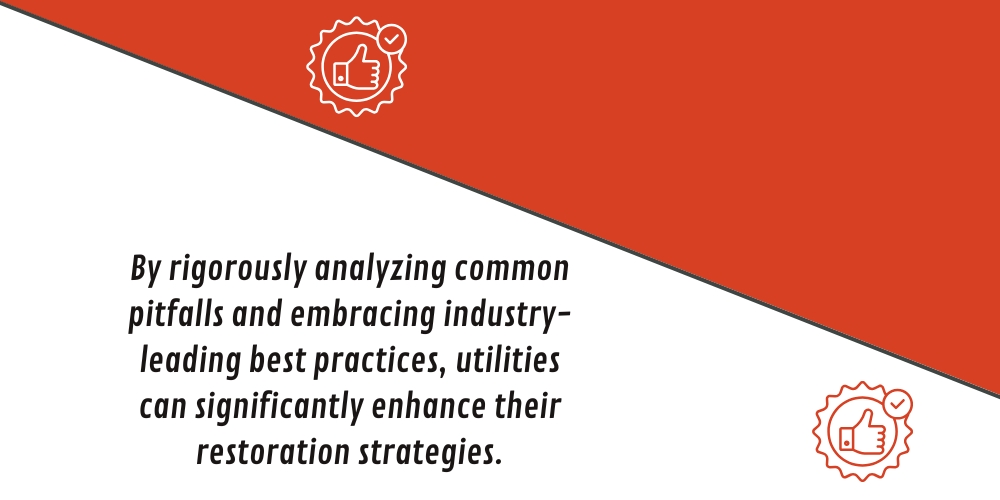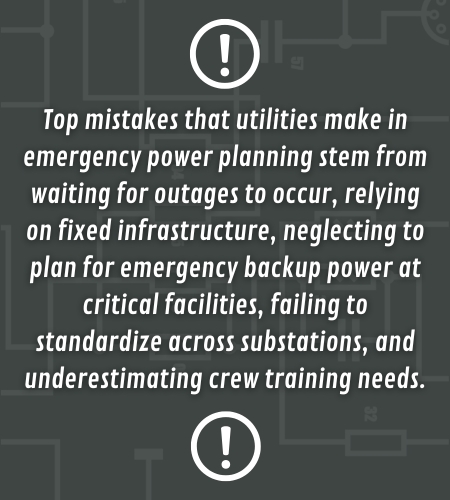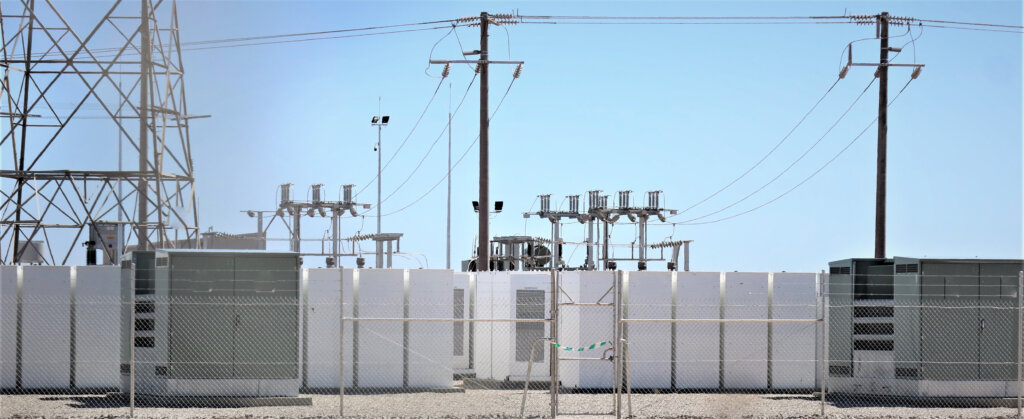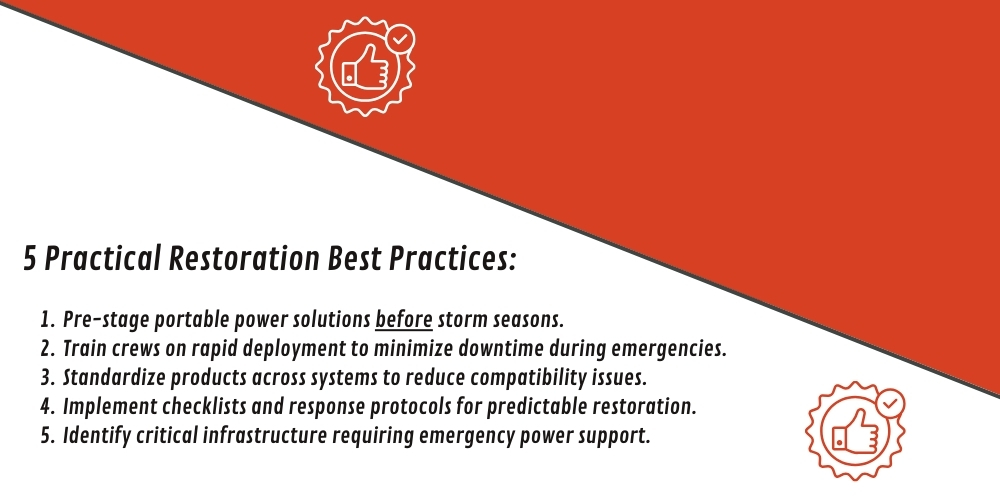Utility restoration during emergencies is a mission-critical operation that extends far beyond the simple act of reconnecting power lines. The process encompasses a complex interplay of logistical coordination, rapid resource deployment, and adherence to stringent safety protocols. Effective restoration is essential not only for the immediate resumption of electrical service, but also for safeguarding public safety, maintaining business continuity, and preserving the trust of the communities served. The stakes are high: every minute of downtime can translate into significant economic losses, compromised critical infrastructure, and heightened risks for vulnerable populations.
Within this intricate ecosystem, utilities, electrical distributors, and equipment rental providers each serve as indispensable partners. However, persistent challenges often arise from gaps in preparedness, communication breakdowns, and inconsistent execution of restoration protocols. These vulnerabilities can lead to delays, increased operational hazards, and suboptimal recovery outcomes. By rigorously analyzing these common pitfalls and embracing industry-leading best practices (e.g., comprehensive grid recovery checklists, robust emergency power protocols, and deployment of advanced temporary power equipment), stakeholders can significantly enhance their restoration strategies. This proactive approach enables faster, safer, and more reliable power restoration … ultimately strengthening resilience in the face of future emergencies.

Top Mistakes Utilities Make In Emergency Power Planning
Despite the critical importance of emergency power planning, utilities often encounter recurring obstacles that hinder their response efforts. These mistakes can stem from inadequate risk assessments, insufficient resource allocation, or outdated protocols … all of which can compromise the speed and effectiveness of power restoration. Recognizing and addressing these (and other) common pitfalls is essential for building a more resilient and responsive emergency power strategy. Some notable mistakes that utilities make include:
Waiting Until Outages Occur Before Sourcing Equipment
A reactive approach to sourcing temporary power solutions frequently results in significant operational bottlenecks during emergencies. When utilities wait until a crisis unfolds to secure equipment, they often face intense competition for limited resources, leading to supply chain delays and extended outages. The absence of pre-established vendor agreements and reserved inventory exacerbates these challenges, as utilities scramble to locate and procure essential equipment precisely when rapid deployment is most critical. This lack of foresight can compromise restoration timelines, increase costs, and undermine public confidence in utility response capabilities.
To mitigate these risks, utilities and their partners must adopt a proactive sourcing strategy that emphasizes preparedness and agility. This involves maintaining critical stock levels of portable power solutions, such as generators, restoration carts, transformers, and cable, to ensure immediate availability during high-demand periods. Establishing mutual aid agreements with neighboring utilities, as well as pre-negotiating contracts with trusted distributors and rental providers further strengthens supply chain resilience. By formalizing these relationships and inventory commitments in advance, utilities can guarantee priority access to essential equipment, streamline logistics, and accelerate restoration efforts when every second counts.
Relying Only On Fixed Infrastructure For Disaster Recovery
Fixed infrastructure such as substations, transmission lines, and switchgear form the backbone of the electrical grid, which is engineered for durability and high-capacity operation. However, these assets remain inherently vulnerable to large-scale disruptions caused by severe weather events, seismic activity, or increasingly sophisticated cyber threats. When restoration strategies focus exclusively on repairing or replacing damaged fixed infrastructure, utilities may encounter prolonged outages, logistical constraints, and limited options for rerouting power. This singular approach can leave critical loads unserved and hinder the rapid restoration of essential services.
To address these vulnerabilities, utilities must integrate mobile and modular power solutions into their emergency response plans. Deploying assets such as portable transformers, restoration carts, and temporary generation units allows restoration crews to bypass compromised infrastructure and establish alternative power pathways. These flexible solutions can be rapidly mobilized and configured to support a wide range of grid topologies and load requirements, enabling utilities to restore service to priority customers and critical facilities much faster. By diversifying recovery strategies with both fixed and mobile resources, utilities enhance grid resilience, reduce outage durations, and ensure a more adaptive and robust response to evolving threats.

Neglecting to Plan for Emergency Backup Power at Critical Utility Facilities
Failure to ensure uninterrupted power for operational hubs — such as command centers, communication networks, and control rooms — can paralyze a utility’s ability to coordinate an effective disaster response. These facilities are essential for dispatching crews, managing grid operations, and maintaining public communications during crises. Without dependable backup power, utilities risk losing visibility and control at the exact moment precision and speed are most needed.
To mitigate this vulnerability, utilities should implement robust emergency power strategies that include automatic transfer switches (ATS), permanent generator docking stations, emergency lighting inverters, sequence of events recorders (SERs), and clearly defined temporary power procedures. Automatic transfer switches and permanent generator docking stations allow for rapid, safe connection of portable generators, ensuring continuity of operations even when the grid is compromised. Adhering to standards like NFPA 70 700.3(F), which requires provisions for temporary backup when permanent systems are down further reinforces resilience. Emergency lighting inverters ensure continuous illumination when the main power supply fails to help meet NFPA 101, which requires emergency lighting along designated exit access components of a building including corridors, stairs and other passages. Sequence Of Events Recorders monitor external inputs and record the time and sequence of changes in electrical systems to enable root-cause analysis and advanced system diagnostics. By planning ahead and equipping critical infrastructure for emergency power, utilities can maintain command capabilities, shorten outage durations, and improve overall disaster response outcomes.
Failing To Standardize Temporary Equipment Across Substations Or Districts
Inconsistent equipment specifications across utility substations or districts can introduce substantial compatibility and interoperability challenges during emergency restoration efforts. When field crews are dispatched to address outages, they may encounter a patchwork of connector types, voltage configurations, and interface standards that differ from one district to another. This lack of uniformity forces technicians to spend valuable time adapting or retrofitting equipment on site, increasing the risk of errors, delays, and even safety hazards. Such inefficiencies can be particularly detrimental during large-scale events that require coordinated mutual aid, as external crews may be unfamiliar with local equipment idiosyncrasies.
To overcome these obstacles, utilities should prioritize the standardization of critical interfaces and specifications across their service territories. Adopting industry-standard cam locks, universal voltage inputs, and harmonized connector types for portable power systems, restoration carts, and substation equipment ensures seamless interoperability and rapid deployment. For electrical distributors and equipment rental providers, maintaining inventories of standardized equipment not only streamlines logistics but also enhances customer satisfaction by reducing lead times and minimizing confusion during high-pressure situations. Ultimately, a commitment to standardization empowers utilities to mobilize resources more efficiently, support mutual aid efforts, and accelerate the restoration of power when it matters most.

Underestimating Crew Training Needs For Rapid Deployment
The effectiveness of even the most advanced restoration equipment is fundamentally dependent on the skill and preparedness of the crews tasked with its deployment and operation. Inadequate or outdated training exposes utilities to a host of operational risks, including improper equipment setup, delayed activation of temporary power solutions, and increased likelihood of safety incidents. During high-stress emergency scenarios, these shortcomings can lead to extended outages, equipment damage, and potential harm to personnel or the public. Furthermore, as restoration technologies evolve and new solutions are introduced, the knowledge gap can widen if ongoing education is not prioritized.
To mitigate these risks, utilities must invest in comprehensive and continuous training programs that address both foundational and advanced competencies. Training curricula should encompass advanced temporary power system setup, troubleshooting techniques, adherence to safety protocols, and best practices for coordinated multi-agency response. Rental and distribution partners play a critical role in this ecosystem by offering on-site demonstrations, technical workshops, and periodic refresher courses tailored to the latest equipment and industry standards. In addition to training their internal teams, utilities must also plan for the rapid onboarding of temporary personnel – such as mutual aid linemen or contractors from other regions – during large-scale events. This includes prearranged agreements for supplemental labor as well as logistical support for housing, meals, fuel, and basic necessities. By fostering a culture of continuous learning, logistical preparedness, and operational excellence, utilities can ensure their personnel – whether in-house or mutual aid – are fully prepared to respond swiftly and safely when emergencies arise, maximizing the impact of their restoration assets.
How To Restore Power Efficiently: Utility Crew Best Practices
Restoring power efficiently during emergencies requires more than just technical expertise … it demands a disciplined, systematic approach that prioritizes safety, speed, and coordination. Utility crews must be equipped with proven best practices that enable them to assess damage accurately, deploy resources strategically, and communicate effectively under pressure. By adhering to the 5 best practices below, crews can minimize downtime, protect public safety, and ensure a resilient recovery for the communities they serve.
1. Pre-stage Portable Power Solutions Before Storm Seasons Or Other High Risk Times
Predictive weather analytics and outage history can help utilities and distributors identify high-risk areas. Pre-staging portable generators, restoration carts, and critical power modules ensures immediate availability. Coordinated staging plans with rental partners optimize resource distribution and response readiness.
2. Train Crews On Rapid Deployment To Minimize Downtime During Emergencies
Practical, hands-on training drills should simulate worst-case scenarios and teach crews to rapidly assess sites, deploy temporary power systems, and transition from emergency to normal operations. Cross-training utility teams with rental company technicians enhances team integration and speeds up deployment. Having a plan for rapid onboarding of temporary personnel reduces chance for deployment delays.
3. Standardize Products Across Systems To Reduce Compatibility Issues
Standardization reduces confusion and streamlines installation under pressure. By enforcing uniform standards across fleets, utilities and equipment providers can ensure plug-and-play compatibility. This minimizes setup errors, reduces connection time, and enhances safety during grid recovery operations.
4. Implement Checklists And Response Protocols For Predictable Restoration
A grid recovery checklist integrated with emergency power protocols, ensures crews follow structured processes during restoration efforts. Clear documentation (from load assessments to equipment grounding procedures) keeps the team aligned and minimizes the risk of oversight in high-pressure environments.
5. Identify Critical Infrastructure Requiring Emergency Power Support
A comprehensive emergency power plan starts with clearly identifying which facilities are mission-critical to utility operations. This includes command centers, communication hubs, SCADA systems, data servers, and field dispatch offices. Prioritizing these assets for backup power ensures operational continuity when the grid goes down. Conducting periodic audits and maintaining an up-to-date inventory of critical loads helps guide decisions on generator sizing, transfer switch placement, and docking station readiness — enabling faster, more coordinated deployment when every second counts.
Conclusion: Creating A Faster, Safer Restoration Strategy
In today’s dynamic energy environment, swift and safe power restoration is a hallmark of utility excellence. Achieving this requires more than advanced equipment … it demands a unified strategy built on outage restoration best practices, proactive planning, and ongoing training. By fostering strong partnerships and prioritizing operational readiness, utilities can turn restoration challenges into opportunities for greater resilience and reliability.

Accelerating and strengthening restoration strategies requires innovative, custom solutions engineered for reliability, flexibility, and safety. A comprehensive portfolio of temporary power equipment, restoration carts, advanced grid recovery tools, and utility power restoration solutions enables utilities to respond rapidly to outages and complex emergencies. With expert support and a commitment to operational excellence, utilities can restore power faster and more safely, building greater resilience for the future.
Now is the time to elevate your restoration strategy and ensure your teams are ready for any emergency. Contact us today to explore products and solutions that align with and strengthen your utility restoration plan.